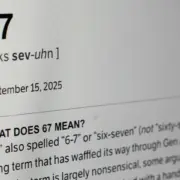Use of QR codes to pay transport fare online eyed

The Bangko Sentral ng Pilipinas (BSP) wants to expand the use of quick response (QR) codes to include cashless payments for public transportation fares, doubling down on efforts to promote digital payments in the country.
The BSP is currently soliciting feedback from stakeholders on a draft circular that proposes guidelines for identifying other possible uses of QR-enabled payment and financial services in “strategic” sectors like transportation. It will accept comments on the circular until Aug. 16.
If approved, the circular will guide payment service providers (PSPs) like banks and e-wallets in servicing QR-enabled payments of transport fares without fees, including interbank charges. Though participation is not mandatory, the central bank said that PSPs are “encouraged to align and participate.”
It will also help identify other sectors where QR codes can be adopted for cashless payments. Such potential payment use cases must be accessible, inclusive and have a “positive” impact on economic growth, the BSP said.
“PSPs play a crucial role in facilitating the movement of funds and enabling financial transactions within the economy,” its four-page circular read in part.
Active participation
“Thus, to support national development objectives, foster financial inclusion, stimulate economic activity and align with regulatory goals for a safe, efficient, reliable and secure payment ecosystem, the Bangko Sentral urges the active participation of PSPs in strategic payment use-cases,” it added.
According to the Bank of International Settlements (BIS), a 1 percentage point increase in digital payments use is associated with 0.10 percentage points growth in gross domestic product per capita, and 0.06 percentage point decline in informal employment. A wider adoption of digital payments could also translate to greater access to credit, the BIS said.
Latest data from the BSP showed the share of digital payments in total retail payment transactions in the country grew to 52.8 percent in 2023, up from 42.1 percent in 2022. That means out of the 5 billion total monthly transactions recorded last year, more than 2.6 billion of these were successfully converted to digital form.
It was a feat that exceeded the expectations of the central bank, which was hoping to digitalize 50 percent of retail payments in the country by 2023. The growth in digital payments also bodes well for the BSP’s goal to onboard 70 percent of adult Filipinos to the formal financial system by 2023. INQ

















